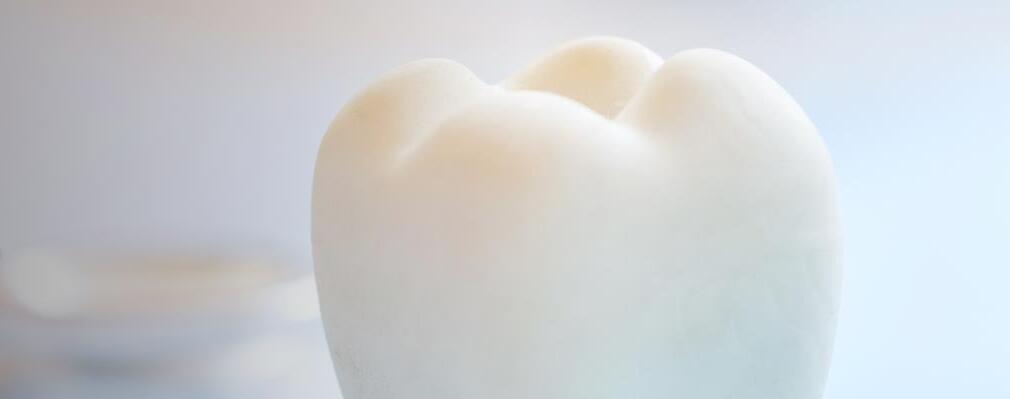Mostly they bring more pain than wisdom: The wisdom teeth have a bad reputation – deserved or undeserved? All important information about wisdom teeth.
- The four wisdom teeth or third molars usually only begin to erupt in young adulthood.
- In very few people, the wisdom teeth erupt completely unnoticed; normally the eruption is accompanied by pain and discomfort.
- Wisdom tooth surgery usually takes 20 minutes to an hour.
- Wisdom teeth are no longer pulled today, but the gums are cut open and the tooth is levered out. This procedure is gentler and healing is faster.
What are wisdom teeth?
The four wisdom teeth or third molars are in the right and left upper and lower jaw quarters – counted from the incisors in the middle of the dentition – each the eighth tooth according to the tooth scheme. Hence they are also called eighth.
The regular change of teeth from the milk teeth to the final set of teeth of the second molars is completed around the age of twelve, while the wisdom teeth only develop afterwards. On X-rays you can see that wisdom tooth germs sometimes only mineralize around the age of 14.
Since wisdom teeth begin to erupt late, often in young adulthood, they were associated with the beginning of understanding or wisdom in humans and named accordingly in many languages. Very rarely, a ninth tooth, known as a ninth or distomolar, also forms in individual people.
Wisdom teeth: symptoms of erupting and growing
In very few people, the wisdom teeth erupt completely unnoticed. Normally, the eruption of the third molar is more likely to be accompanied by pain and discomfort. Often these are:
- Pain in the jaw and face
- Swelling in the back of the jaw
- Sensation of pressure or throbbing in the gums near the throat or in the jawbone
- red, swollen and bleeding gums in the back of the mouth
- Pain and difficulty chewing, sometimes swallowing or opening your mouth
- Headache and earache
- enlarged lymph nodes
- swelling tonsils
- cold-like feeling
Since the wisdom teeth usually erupt in several bursts, these complaints usually appear for a few days, then disappear again and repeat themselves – often at intervals of around three to five months. If they don’t subside in a week, you should see the dentist.
Wisdom tooth pain on eruption
The pain, which usually occurs in several episodes when breaking through the wisdom teeth, is not insignificant for many sufferers. Painkillers, local anesthetic gels or sprays as well as a number of home remedies can make these phases much more bearable.
Wisdom teeth: relieve pain
This helps with pain and discomfort when the wisdom teeth erupt:
- over-the-counter pain relievers such as acetylsalicylic acid, ibuprofen, or paracetamol. Pay attention to the maximum intake!
- Salt water irrigation for pain and infection. Dissolve a heaping teaspoon of table salt in a cup of warm water and rinse with it for one minute every two to three hours.
- Gels or sprays for local anesthesia with lidocaine
- Onion, garlic or ginger, lightly pressed onto the wound with a finger, work against infections and prevent them
- Cooling with ice in the mouth or on the outside of the cheek against swelling and inflammation
- only brush with a soft toothbrush
- Gently massage the gums with a clean finger with a little pressure to help the tooth break through.
- Essential oils disinfect and numb the sore, painful area in the mouth. Clove oil is particularly good at numbing. Also suitable are: tea tree oil, sage oil, aloe vera, cinnamon oil, turmeric oil and peppermint oil.
- Tea compresses from tea bags, two to three times a day. Pain-relieving effects: black or green tea, echinacea tea, sage and turmeric tea
Wisdom Teeth Headache?
According to scientific studies, around 20 percent of people in Germany experience chronic pain related to causes in the teeth and jaws. Often these are headaches or migraines. For example, wisdom teeth can trigger headaches via the nerve endings of the teeth – often as severe pain attacks.
Pulling wisdom teeth: when is it necessary?
If the wisdom tooth has enough space and is just growing, it can simply take its intended place in the teeth. A wisdom tooth must be removed if:
- the tooth is malformed
- other teeth or tooth roots are displaced or endangered due to lack of space
- There is a risk of misaligned teeth from the growing wisdom tooth
- Inflammation occurs through the wisdom tooth
- the tooth is damaged by tooth decay or inflammation of the roots
- cysts have formed
Wisdom tooth surgery: procedure and duration
If you have to get your wisdom teeth out, you should seek out a specialized dentist or oral surgeon with experience in wisdom tooth removal for a painless and complication-free operation.
In the usually outpatient operation, the surgeon exposes the tooth by cutting open the gum and loosening it. The wisdom tooth is now loosened with pliers and levers and lifted out. If the tooth is complicated or has an unusual shape, it may be necessary to split it up and remove the pieces one by one. The operation for the lower jaw is usually a little more complex because the tissue here is significantly more compact than on the upper jaw. Once the wisdom tooth has been pulled, all that remains is to sew up the wound on the gums.
Since the operation can usually be carried out in a minimally invasive manner, all four wisdom teeth could theoretically be removed at the same time. In practice, both eights are usually removed first on one side and only a few weeks later on the other side, as the patient always has one intact side to chew without pain.
Remove wisdom teeth: local or general anesthesia?
Local anesthesia is usually used so that the patient does not feel any pain when the wisdom teeth are removed. If the operating doctor expects a more complicated operation due to the shape or position of the tooth, or if the patient does not want to hear about the operation, general anesthesia can also be selected. Since general anesthesia always puts a greater strain on the body, the risks must be weighed up against each other. If the patient is very afraid of the operation, a slight sedation, for example with nitrous oxide, is an option.
Wisdom tooth surgery: duration
Wisdom tooth surgery usually takes 20 minutes to an hour. Wisdom tooth extraction is usually carried out in a minimally invasive manner. It is therefore possible to have all four wisdom teeth removed during one procedure. However, it is more convenient to have only one side removed at a time.
After the wisdom tooth operation
If the operation was carried out under general anesthesia, the patient remains in the practice or clinic for observation for a few hours. With local anesthesia or partial sedation, he is discharged home with painkillers or a prescription for it directly after the operation. Clarify in advance whether someone can pick you up after the operation, or order a taxi, because you shouldn’t drive or bike yourself. Do not undertake anything for the next two to three days after the wisdom tooth operation, take a sick note and ensure a lot of rest so that your body can optimally recover from the procedure. The sutures can then be removed seven to ten days after the operation.
Relieve swelling
Since the operated areas should definitely be cooled, it is advisable to have a large supply of cooling pads in place before the operation and to pack them in the refrigerator beforehand. A soft toothbrush and a disinfecting mouth rinse against wisdom tooth inflammation should also be available. As a rule, treated in this way, the swelling will go away on its own within a few days.
Removing wisdom teeth: what to do about pain
Most patients tolerate wisdom tooth operations quite well, and severe pain is rather rare. Your dentist will usually prescribe a pain reliever for the pain that occurs at the wound. If you get yourself pain pills, keep in mind that aspirin’s active ingredient, acetylsalicylic acid, thins the blood, increasing the risk of bleeding heavily. Ibuprofen and paracetamol are therefore better suited here.
Eating again after the wisdom tooth operation
If the wisdom teeth are out, you can eat again as soon as the anesthesia has worn off and there is no longer any risk of biting your lip or cheek without realizing it, for example. First of all, stick to soft foods like soups and purees, as chewing and chewing chunks can be painful. If possible, stock up on supplies before the operation, such as clear broths or pureed soups, applesauce, soft bread without a crust, mashed potatoes, soft-boiled pasta or rice, pureed fruit or vegetables or scrambled eggs.
More tips:
- At first, drinking is easier with a straw.
- Juices and carbon dioxide can sting the wound, it is better to drink still water or lukewarm herbal teas.
- If you take antibiotics, dairy products are taboo. Lactic acid bacteria are also not beneficial for wound healing.
- Stay away from caffeine, alcohol and nicotine, which increase blood pressure and hinder wound healing.
- Avoid hot spices that sting the wound.
- Don’t eat too hot.
You can usually eat normally again about a week after the operation.




